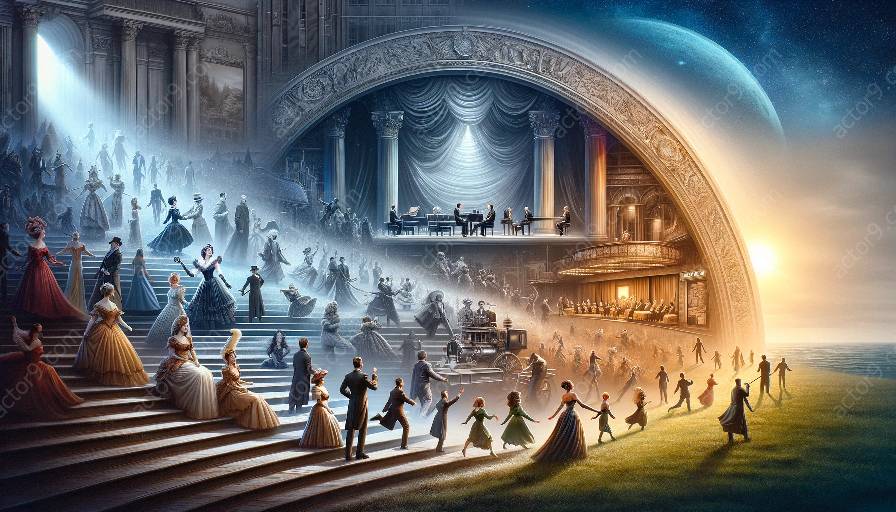Musical theatre has long served as a reflection of society, embodying the beliefs, values, and cultural shifts of different time periods. One of the most fascinating aspects of this art form is the ever-changing representation of gender and identity. From the early days of musical theatre to contemporary productions, the portrayal of gender and identity has undergone a remarkable evolution, reshaping narratives and challenging societal norms. This topic cluster will delve into the historical roots, thematic evolution, and impact of gender and identity representation in musical theatre.
History of Musical Theatre
The history of musical theatre provides a rich tapestry of cultural and artistic developments that have shaped the representation of gender and identity. The roots of musical theatre can be traced back to ancient Greek and Roman theatrical performances, which often featured gender-bending roles due to the exclusively male casts. Fast-forward to the Renaissance and the emergence of commedia dell'arte, where cross-dressing and gender ambiguity became prominent theatrical devices.
However, it was during the 19th and 20th centuries that modern musical theatre as we know it began to take shape. The advent of vaudeville, operetta, and the Broadway musical brought forth iconic characters and storylines that laid the groundwork for exploring gender and identity in a theatrical context. Works such as "Show Boat," "Oklahoma!", and "West Side Story" showcased complex portrayals of gender dynamics, romance, and societal expectations.
Musical Theatre and Gender
The portrayal of gender in musical theatre has evolved from traditional gender roles to more nuanced and inclusive depictions. Early musicals often featured stereotypical gender archetypes, with male characters embodying strength and heroism, and female characters epitomizing innocence and romance. However, as societal attitudes towards gender evolved, musical theatre began to challenge these stereotypes, offering more diverse and multidimensional representations of gender identity.
Landmark musicals such as "Cabaret," "Hedwig and the Angry Inch," and "Fun Home" defied traditional gender norms, exploring themes of gender fluidity, nonconformity, and queer identity. These productions pushed boundaries and sparked important conversations about gender representation and the complexities of human identity. Moreover, the increased presence of genderqueer and transgender characters in contemporary musicals has further expanded the spectrum of gender representation on stage.
The Impact of Gender and Identity Representation
The evolving portrayal of gender and identity in musical theatre has had a profound impact on both the art form and its audiences. By challenging conventional gender stereotypes and celebrating diverse identities, musical theatre has become a platform for empowerment, empathy, and social change. Audiences are provided with opportunities to witness authentic and relatable representations of gender and identity, fostering a deeper sense of inclusivity and understanding.
Furthermore, the thematic exploration of gender and identity in musical theatre has contributed to broader conversations about social justice, equality, and human rights. Productions like "Kinky Boots," "La Cage aux Folles," and "Rent" have become emblematic in championing LGBTQ+ representation and advocating for marginalized voices. Through storytelling and music, these musicals convey messages of acceptance, resilience, and the universal human experience.
Conclusion
The evolution of gender and identity representation in musical theatre is a testament to the art form's capacity for transformation and introspection. By intertwining history, culture, and creativity, musical theatre continues to redefine the boundaries of gender representation and challenge societal constructs. As we look towards the future, it is evident that the exploration of gender and identity will remain integral to the evolution of musical theatre, shaping its narratives and leaving an indelible impact on generations of theatregoers.




































